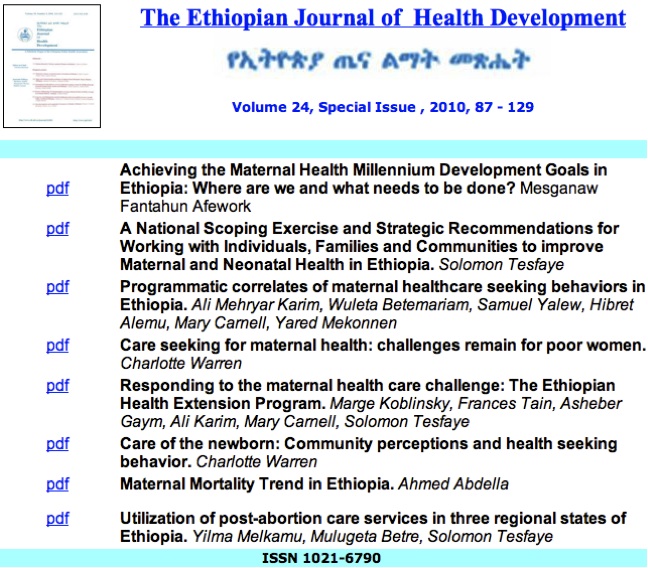Lindtjørn B, Mitiku D, Zidda Z, Yaya Y (2017) Reducing Maternal Deaths in Ethiopia: Results of an Intervention Programme in Southwest Ethiopia. PLoS ONE 12(1): e0169304. doi:10.1371/journal.pone.0169304
Background In a large population in Southwest Ethiopia (population 700,000), we carried out a complex set of interventions with the aim of reducing maternal mortality. This study evaluated the effects of several coordinated interventions to help improve effective coverage and reduce maternal deaths. Together with the Ministry of Health in Ethiopia, we designed a project to strengthen the health-care system. A particular emphasis was given to upgrade existing institutions so that they could carry out Basic (BEmOC) and Comprehensive Emergency Obstetric Care (CEmOC). Health institutions were upgraded by training non-clinical physicians and midwives by providing the institutions with essential and basic equipment, and by regular monitoring and supervision by staff competent in emergency obstetric work.
Results In this implementation study, the maternal mortality ratio (MMR) was the primary outcome. The study was carried out from 2010 to 2013 in three districts, and we registered 38,312 births. The MMR declined by 64% during the intervention period from 477 to 219 deaths per 100,000 live births (OR 0.46; 95% CI 0.24–0.88). The decline in MMR was higher for the districts with CEmOC, while the mean number of antenatal visits for each woman was 2.6 (Inter Quartile Range 2–4). The percentage of pregnant women who attended four or more antenatal controls increased by 20%, with the number of women who delivered at home declining by 10.5% (P<0.001). Similarly, the number of deliveries at health posts, health centres and hospitals increased, and we observed a decline in the use of traditional birth attendants. Households living near to all-weather roads had lower maternal mortality rates (MMR 220) compared with households without roads (MMR 598; OR 2.72 (95% CI 1.61–4.61)).
Conclusions Our results show that it is possible to achieve substantial reductions in maternal mortality rates over a short period of time if the effective coverage of well-known interventions is implemented.


